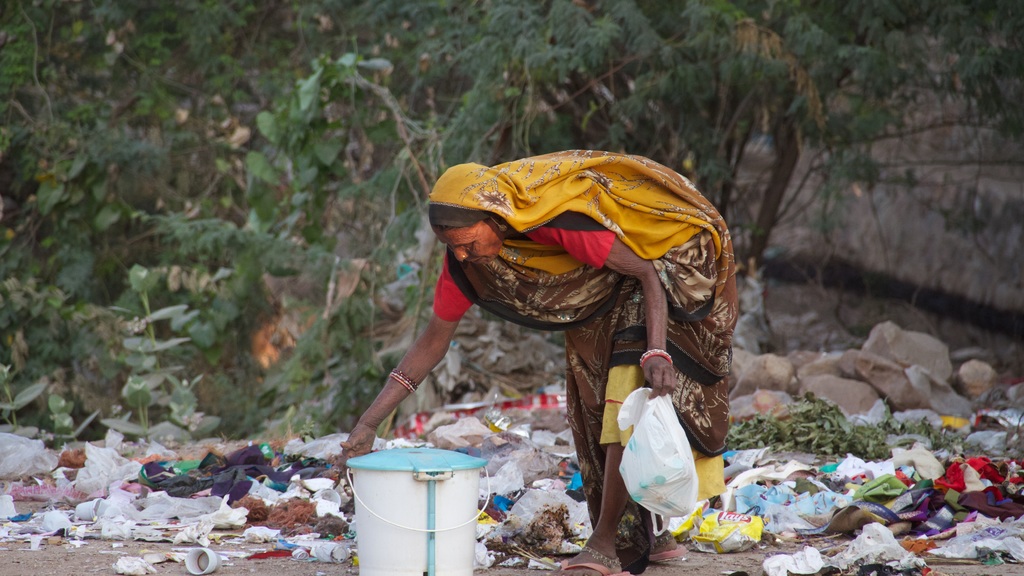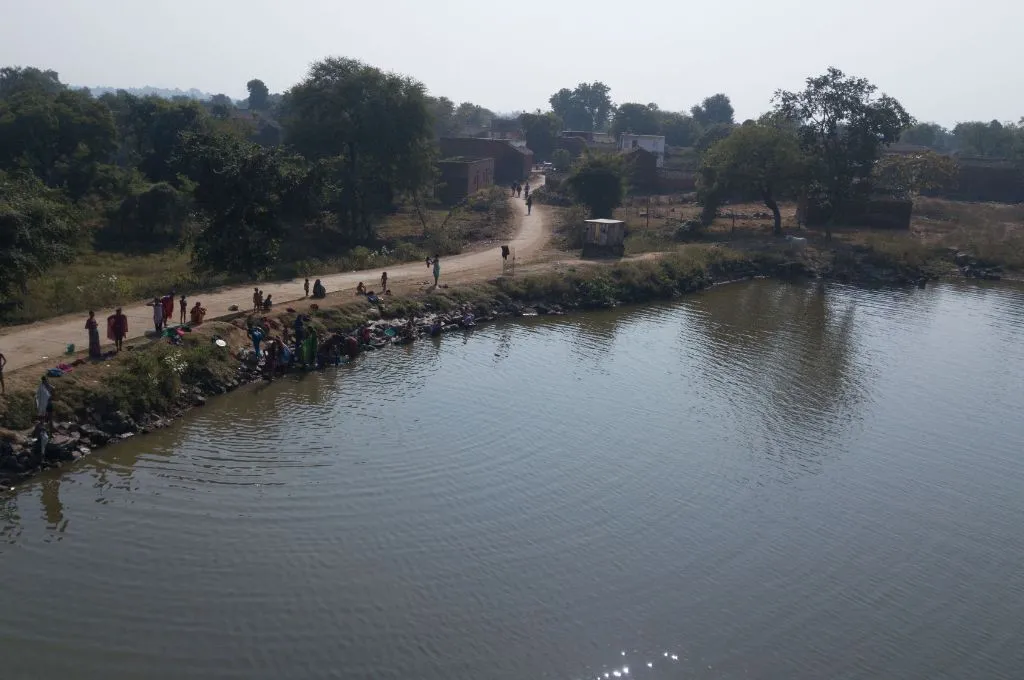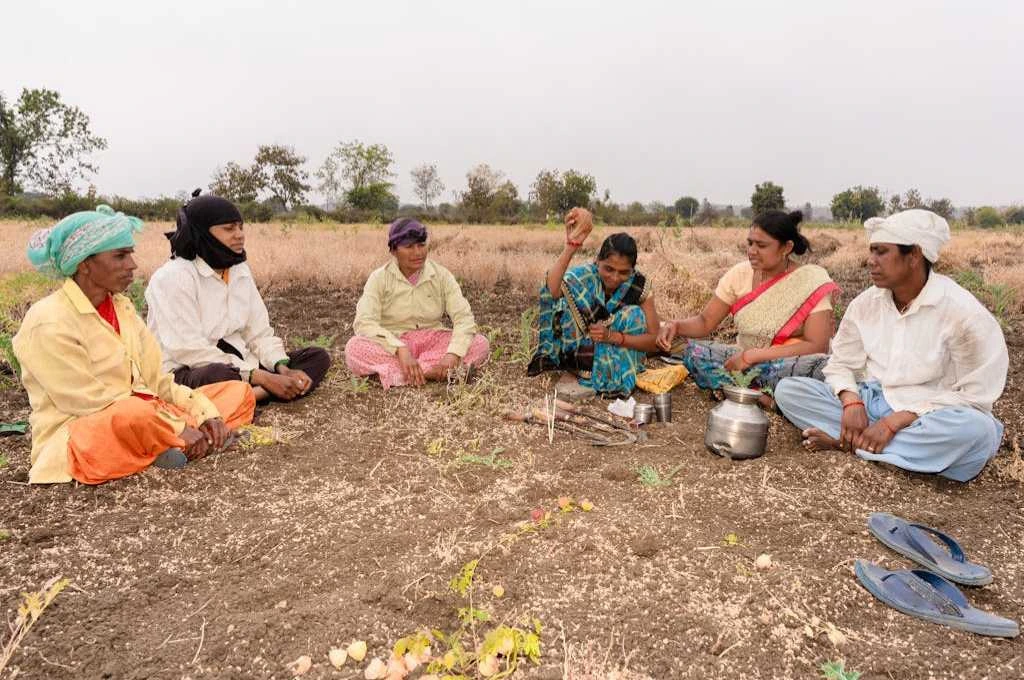When the lockdown was announced, sanitation workers found themselves clubbed together with healthcare workers, the media, and police, as categories of people who were exempt from the lockdown and expected to discharge their duties as usual. They were also counted as ‘frontline’ workers, along with healthcare workers.
However, they have not received the same amount of attention, in terms of having access to protective gear or logistics support (food, water, rest, finances, transport, and so on). Moreover, they are exposed to a great amount of risk while handling biomedical waste during this time, added to which they have no information or training on how to manage it.
India has about five million sanitation workers, a majority of them in the informal sector.
India has about five million sanitation workers—a majority of them in the informal sector. The COVID-19 pandemic has exposed the indifference of our government towards the conditions of these workers across the country, and the gaping holes in our practice of solid and biomedical waste management.
The Central Pollution Control Board (CPCB) did come out with guidelines on handling COVID-19 biomedical waste, but these were focused on hospitals and not on household-level biomedical waste (except for households with suspected or confirmed COVID-19 cases). In the absence of any systems and processes, several states such as Kerala, Maharashtra, or West Bengal, are now struggling with the disposal of biomedical waste.
Related article: How we can support sanitation workers during COVID-19
Segregation of waste does not happen in India
The Union Ministry of Environment, Forests and Climate Change (MoEF&CC) had notified the new Solid Waste Management Rules (SWM), 2016 to replace the Municipal Solid Wastes (Management and Handling) Rules, 2000. The new rules mandated the segregation of waste at source into three streams: Biodegradables, dry waste (plastic, paper, metal, wood, and so on), and domestic hazardous waste (diapers, sanitary napkins, mosquito repellents, condoms, disposable gloves, and face masks), before handing it over to the waste collector.
In practice, the segregation of waste from households happens only in two streams: wet and dry. When municipalities and waste collectors do not insist on separation, domestic hazardous waste gets mixed either with wet or dry waste, making it unhygienic and hazardous for the sanitation workers who handle it.1
The absence of careful segregation also affects the possibility of recovering, reusing, and recycling dry waste, and compromises the composting process of wet waste, leading to more waste in underground landfills or overground dumpsites.

When municipalities and waste collectors do not insist on separation, domestic hazardous waste gets mixed either with wet or dry waste, making it unhygienic and hazardous for the sanitation workers who handle it. | Picture courtesy: Pxhere
Biomedical waste from households also needs to be treated
India also has the Biomedical Waste Management Rules 2016, for the safe and scientific disposal of biomedical waste. However, these are only enforced in hospitals and healthcare facilities (HCFs). HCFs are estimated to generate close to 608 tonnes of biomedical waste per day, of which 528 tonnes per day—87 percent of the waste—is treated. For households, this figure is almost zero.
Biomedical waste is considered to be a small part of the overall composition of household waste, and hence is not properly estimated. The proportion of such waste could be estimated by considering the number of women of menstrual age, usage of baby and adult diapers, consumption of regular medication, and so on.
This non-adherence to rules and lack of preparedness become significant problems in times of public health emergencies.
This non-adherence to rules and lack of preparedness become significant problems in times of public health emergencies. Even now, segregation of biomedical waste is happening only from HCFs or households with suspected or confirmed COVID-19 cases, and not from every household, as the case should have been. This is a matter of serious concern, since nearly 80 percent of COVID-19 cases are asymptomatic, and hence will not fall under households with suspected COVID-19 cases. The risk to sanitation workers is therefore multiplied manifold, as is the risk to public health, since most mixed waste is dumped in the open.
Related article: COVID-19: A unique oppportunity to reform our health systems
Here’s what we can do
Given the situation we are currently in, there is an urgent need to separate and safely dispose biomedical waste generated from households, as well as ensure compliance of waste management rules by healthcare facilities. Here are the actions that different stakeholders can take in the here and now:
- Provide all waste collectors and sanitation workers across the country with protective gear, and information and training on how to protect themselves. This needs to be done immediately.
- Develop and implement guidelines for disposal of PPE (face masks, gloves), used tissues, and other COVID-19 related biomedical waste, in public areas, especially as the lockdown eases.
- Run a widespread awareness campaign for segregation of waste at source, on the lines of the government’s campaign around preventive measures of COVID-19. Citizens must be made aware of the public health hazards of mixing biomedical waste with other waste streams, and guided to handle waste responsibly.
- Enhance capacities of Common Biomedical Waste Treatment Facilities (CBWTFs) to be able to effectively dispose of biomedical waste. Where there is shortage of CBWTFs, mobile biomedical treatment plants need to be deployed urgently to manage the waste.
- Employ effective information, education, and communication (IEC) methods with households on what is biomedical waste, the need to collect it separately, and safe ways to dispose it, especially during the ongoing pandemic. The help of resident welfare associations and citizen groups can be enlisted to follow-up with households and monitor dumpsites.
- Enforce CPCB guidelines that requires every dhalao, or roadside garbage dump, to have separate bins for biomedical waste.
- Streamline systems for waste collection, including deployment of separate vehicles for collection of different streams of waste from households and other generators.
- Ensure the collection of all waste from health centres and quarantined households by separately designated sanitation workers who are equipped with PPE and aware of safety measures.
- Prohibit waste workers on dumpsites from manually working with mixed waste or extracting recyclables in this period. They could be allowed to do this only on sites where it can be assured that household-level waste segregation is of good quality.
Sanitation workers play a crucial role in keeping our cities clean, and the importance of their work cannot be overstated during this time. We cannot fight this pandemic unless they are able to work with safety and dignity.
- Waste pickers and kabadiwalas (small and big waste buyers and aggregators) collect, sort, and process recyclable items, by picking them from mixed waste at dumpsites or street corners. This puts their health at risk, since due to lack of segregation, recyclable items are typically soiled with biomedical waste.
—
Know more
- Learn more about how India’s generation of medical waste has increased during the pandemic, how the waste management system is ill-prepared to handle it, and its impact on sanitation workers.
- Explore this infographic to learn about household waste, waste segregation, and waste treatment.
- Read the latest rules released by the central government for management of different waste streams.
Do more
- Connect with the author at rvjayapadma@gmail.com to learn more, or to take collaborative action related to COVID-19 and sanitation workers.





